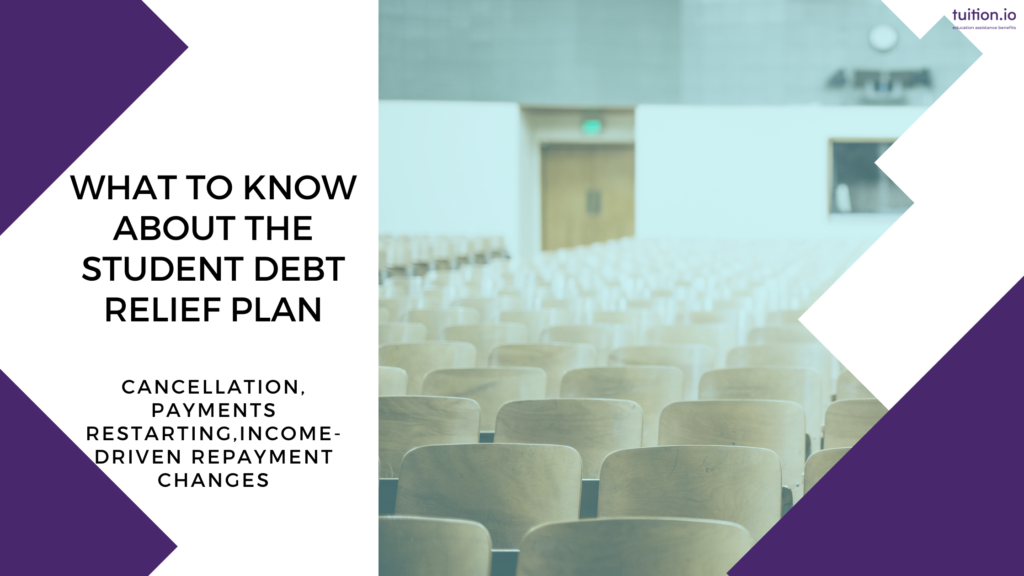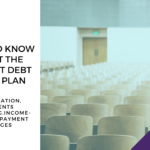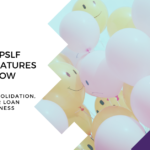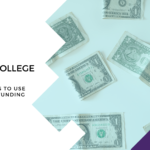On 8/24/22 the Department of Education released details about the three part plan offering borrowers student debt relief. Read on to understand how the Student Debt Relief Plan announcement impacts your specific loan situation.
Part 1: Payments will resume, make a plan for when they do.
My federal student loan payments aren’t paused, what relief is available to me?
The payment pause only applies to Department of Education held loans. All Direct Loans but generally not FFEL/Perkins loans are held by the Dept of Ed. But, if you have FFEL or Perkins loans, you can consolidate to a Direct Consolidation Loan to get some relief.
-
-
- If you’re pursuing Public Service Loan Forgiveness (PSLF) avoid consolidating qualifying Direct Loans after the 10/31/22 deadline so you don’t reset the qualifying payment count to zero.
- You can consolidate your ineligible loans by themselves after the 10/31/2022 limited waiver expiration to avoid resetting the payment count on qualifying loans.
-
How does this impact other loan forgiveness like PSLF?
Paused payments still count as progress toward PSLF, Income Driven Loan Forgiveness (IDLF), and Teacher Loan Forgiveness (TLF).
How can I plan for payments in January?
This is the final payment pause extension, so make a plan to resume payments in January. This post is a good place to start Preparing for Federal Student Loan Payments to Resume.
Part 2: Up to $10,000 or $20,000 of cancellation is part of the student debt relief for at need borrowers.
Who is this cancellation relief available to?
Borrowers with an annual income below $125,000 (for individuals) or $250,000 (for married couples or heads of households) could qualify for $10,000 or $20,000 of cancellation.
Current students with Department of Education held loans (all Direct, very few FFEL loans) from 6/30/22 and prior are eligible for this cancellation.
- Dependent borrowers’ eligibility is based on parental income.
As of Sept. 29, 2022, borrowers with federal student loans not held by ED cannot obtain one-time debt relief by consolidating those loans into Direct Loans.
Borrowers with FFEL Program loans and Perkins Loans not held by ED who have applied to consolidate into the Direct Loan program prior to Sept. 29, 2022, are eligible for one-time debt relief through the Direct Loan program.
How do I know if I qualify for $10,000 or $20,000 of cancellation as part of the student debt relief?
- You can receive up to $10,000 of student debt cancellation if you aren’t a Pell Grant recipient.
- You can receive up to $20,000 of cancellation if you are a Pell Grant recipient.
How do I make sure I get the student debt cancellation?
Step 1: Complete the application to verify your income before 12/31/2023. The beta application is now available. https://studentaid.gov/debt-relief/application there are known intermittent outage issues so if it doesn’t work right away, try again later. Borrowers who are already on IDR plans may have their income information used to determine eligibility. However, currently the Department of Education recommends that all borrowers submit their applications.
When can I expect to see the student debt cancellation?
After you apply, can expect cancellation within 4-6 weeks and not sooner than 10/23/2022.
Is the cancellation amount taxable?
You won’t have to pay federal income taxes on your cancellation. However, 13 states are considering taxing the cancellation.
Part 3: Changes to Income-driven repayment mean lower payments for everyone.
How will my income driven payments be more affordable under the new rules?
Changes to discretionary income calculations mean your payments will be lower.
-
- The new discretionary income calculation will be: adjusted gross income (AGI) – 225% of the federal poverty level
- Used to be AGI – 150% of federal poverty level
- The new discretionary income calculation will be: adjusted gross income (AGI) – 225% of the federal poverty level
Balances will no longer grow under income driven repayment plans.
The Dept of Ed will cover the unpaid interest for borrowers whose required minimum monthly payment does not satisfy the total interest accumulated. Borrowers will still need to make monthly payment and balances will stay flat for those who aren’t able to keep up with interest.
What is the new income-driven repayment plan that’s only 5% of discretionary income?
This new plan is for undergraduate loans only and has the lowest possible monthly payment of all the income driven plans. The monthly payments under this new plan will be 5% of discretionary income. Now even more borrowers might be able to access loan forgiveness programs like PSLF or income-driven loan forgiveness.
Some borrowers can get their loans forgiven after 10 years of income-driven payments.
Any borrowers who have an original loan balance of $12,000 or less will have their loans cancelled after 10 years of income-driven payments. Borrowers with original loan balances >$12,000 will still have to pay for 20-25 years before getting their balance cancelled.
Additional Resources
Federal Student Aid One Time Cancellation
Federal Student Aid Student Debt Relief Plan Explained
What You Need to Know About the PSLF Limited Waiver Opportunity




